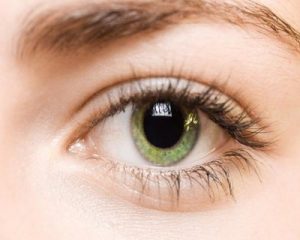- Home
- Editorial
- News
- Practice Guidelines
- Anesthesiology Guidelines
- Cancer Guidelines
- Cardiac Sciences Guidelines
- Critical Care Guidelines
- Dentistry Guidelines
- Dermatology Guidelines
- Diabetes and Endo Guidelines
- Diagnostics Guidelines
- ENT Guidelines
- Featured Practice Guidelines
- Gastroenterology Guidelines
- Geriatrics Guidelines
- Medicine Guidelines
- Nephrology Guidelines
- Neurosciences Guidelines
- Obs and Gynae Guidelines
- Ophthalmology Guidelines
- Orthopaedics Guidelines
- Paediatrics Guidelines
- Psychiatry Guidelines
- Pulmonology Guidelines
- Radiology Guidelines
- Surgery Guidelines
- Urology Guidelines
Long term exposure Vehicle exhaust pollutants increases risk of age related macular degeneration

Exposure to the highest levels of air pollutants was associated with an almost doubling in risk among those aged 50 and older, finds a new study.
Long term exposure to pollutants from vehicle exhaust is linked to a heightened risk of the common eye condition age-related macular degeneration, or AMD for short, suggests research published online in the Journal of Investigative Medicine.
AMD is a neurodegenerative condition that affects the middle part of the retina, known as the macula. It is one of the most common causes of poor vision in older people and is most likely caused by an interplay between genetic and environmental risk factors.
Long term exposure to air pollution has been linked to a heightened risk of several conditions, including respiratory and cardiovascular diseases. But less is known about its potential effects on eye health.
To explore this further, the Taiwanese researchers analyzed national health insurance and air quality data from 1998 to 2010 to see if there might be a link between long term exposure to the pollutants nitrogen dioxide (NO₂) and carbon monoxide (CO) and a heightened risk of AMD.
As the condition is more common among older age groups, the researchers focused only on 39,819 people aged 50 and above, most of whom lived in either highly (30%) or moderately (32.5%) urbanized areas.
Because there are seasonal variations in air pollutant levels, the researchers calculated an average annual exposure, which was categorized into four different levels.
During the monitoring period, 1442 people developed AMD.
After taking account of potentially influential factors, such as age, sex, household income, and underlying illnesses, those with the highest level of exposure to NO₂ (more than 9825.5 ppb) were nearly twice (91%) as likely to develop AMD as those exposed to the lowest level (less than 6563.2 ppb).
And people who were exposed to the highest level of CO (more than 297.1 ppm) were 84% more likely to develop AMD than those exposed to the lowest level (less than 195.7 ppm).
The highest rate (5.8%) of newly diagnosed AMD was among people living in the area with the highest level of CO exposure.
This is an observational study, and as such, can’t establish cause. And the authors emphasize that the data didn’t include information on other risk factors, such as smoking, genetics, and inflammation.
This is the first study of its kind to “demonstrate a significant association between AMD and high levels of ambient NO₂ and CO,” they write.
Recent research has implicated NO₂ in cardiovascular and neurological ill health, and as the retina is part of the central nervous system, there is a plausible biological explanation for its vulnerability to this pollutant, they add.
For more details click on the link: https://jim.bmj.com/lookup/

Disclaimer: This site is primarily intended for healthcare professionals. Any content/information on this website does not replace the advice of medical and/or health professionals and should not be construed as medical/diagnostic advice/endorsement or prescription. Use of this site is subject to our terms of use, privacy policy, advertisement policy. © 2020 Minerva Medical Treatment Pvt Ltd